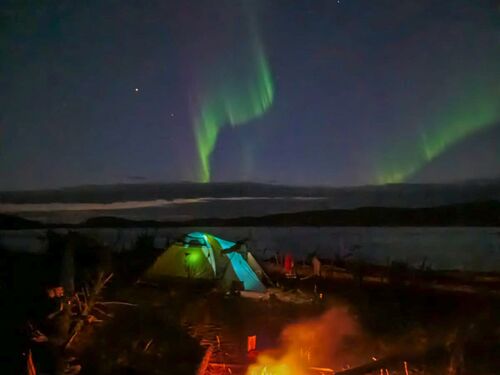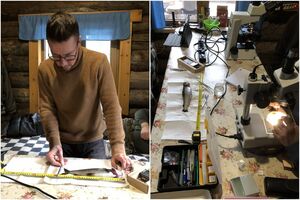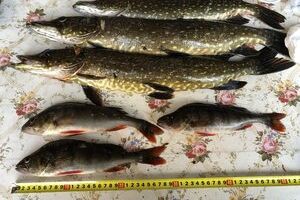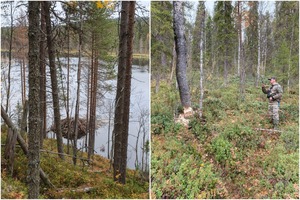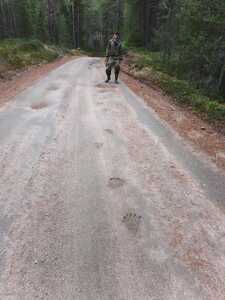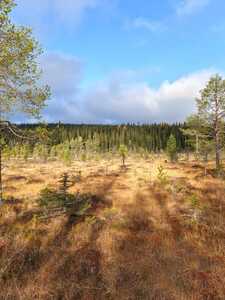Specialists from the Laboratory of Animal and Plant Parasitology at the Institute of Biology KarRC RAS worked in the upper reaches of the Olanga River, which originates from Lake Paanajärvi. Recreational angling is officially permitted in this area. The scientists' goal was to assess the species composition and abundance of fish, primarily grayling and brown trout, which are of particular interest for tourism as well as science. Pike, perch, and other species were also in the focus of researchers' attention.

Researchers of fish parasites worked in the upper reaches of River Olanga
– Such studies are essential for understanding the current fish population and species composition in the river. Based on this data, recommendations will be developed regarding how much, where, and by what methods fishing can be allowed and where it should be temporarily suspended. This is important for replenishing and conserving the stocks of valuable fish species, – explained Senior Researcher of IB KarRC RAS Aleksey Parshukov.

Senior Researcher of IB KarRC RAS Aleksey Parshukov (left) and Principal Researcher of IB KarRC RAS Evgeny Ieshko working in the field lab
Simultaneously, researchers studied the parasites characteristic of local fish. The material collected during the expedition is currently being processed. In the future, the parasites as well as their hosts can be studied genetically. Further on, the fish parasitologists plan to study a red-listed mollusk – the freshwater pearl mussel – in rivers of the national park. During an early stage of its life cycle, it parasitizes the gills of juvenile salmonid fishes, including brown trout.
The first project trip to Paanjarvi was made also by staff of the Zoology Laboratory of the Institute of Biology KarRC RAS. The scientists examined the ecosystems to be explored in the coming winter and next summer. For some species, zoologists already possess a rich background: the national park’s subpopulation of the wild forest reindeer has been monitored long term. This species is also red-listed in the Republic of Karelia and in the Russian Federation.

In the boat – Senior Research of IB KarRC RAS Danila Panchenko
– We plan to estimate the relative abundance of certain animal species, such as the reindeer and capercaillie. They are umbrella species – those that, when protected, help to conserve other species that share its habitat, – commented Head of Zoology Laboratory IB KarRC RAS Konstantin Tirronen.
Previously, Karelian ornithologists noted a decline in grouse numbers. A preliminary inspection of some sites in the Paanajarvi NP also showed grouse were scarce there.
In this project, zoologists are going to perform an inventory of species in Paanajarvi, including small mammals, assess their ratios and current population sizes. The effort involves a comparative dimension: specialists will study the available archives to track how abundances have changed. Some species will be given more scrutiny. E.g., ornithologists will look into the sub-species structure of the capercaillie, which is poorly developed for bird’s entire distribution range. Judging by different sources, birds in Paanajarvi may belong to three subspecies. While previously researchers identified them only by their appearance and song, they can now refine this information using genetic methods.

Checking up on camera traps
The next field trip to the national park for zoologists is scheduled for this winter. The scientists plan to conduct winter track counts. This is a technique adopted in Russia that allows for tracking changes in the numbers of birds and mammals across large areas. In its original form, it involves surveyors skiing specific routes and counting the number of grouse birds encountered and animal tracks. The results are then converted into relative or absolute population indices using mathematical techniques. Zoologists intend to stick to this classical technique in doing the surveys. Also, camera traps will be deployed, e.g. in capercaillie lekking grounds.
The project "Arctic nature in the Paanajarvi National Park" is a winner of the first grant competition of the Presidential Nature Foundation. It is implemented by the North Center Association and Paanajarvi NP in partnership with the Karelian Research Centre RAS. The objective of the project is conservation of the unique arctic ecosystems. To fulfill this objective, scientists will collect information on the current biodiversity of Paanajarvi, including the situation with rare and red-listed species, and on the effects of human pressure on the wildlife and ecosystems.




